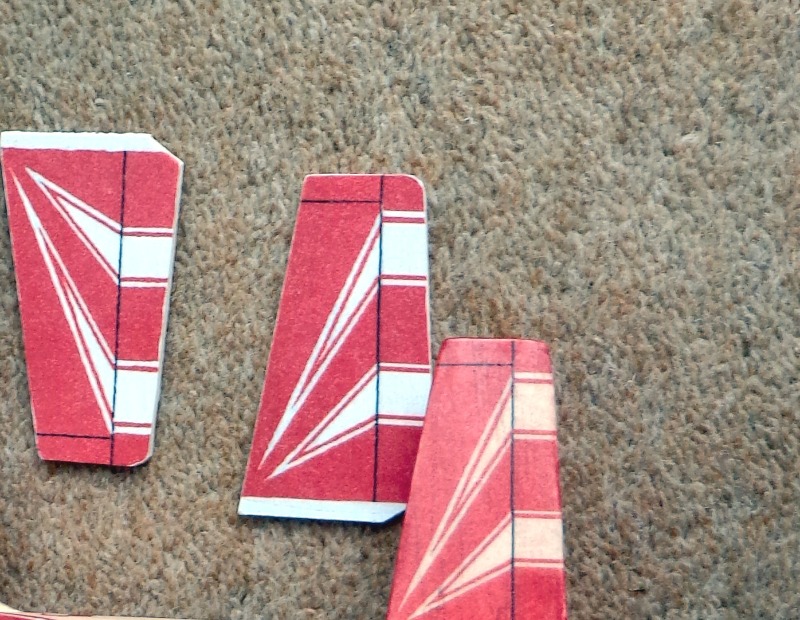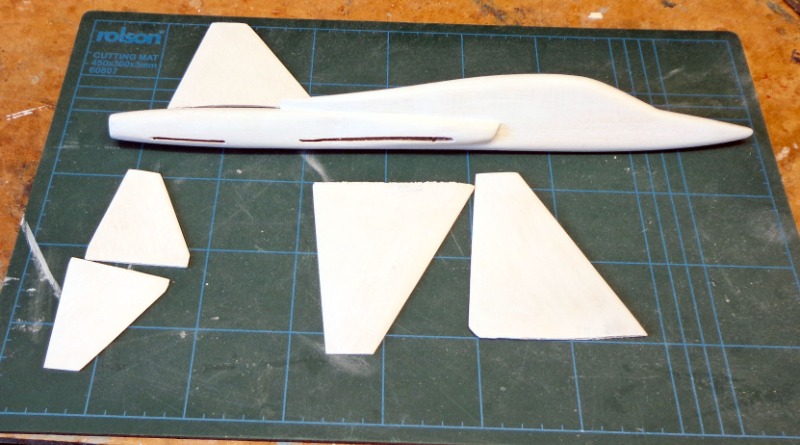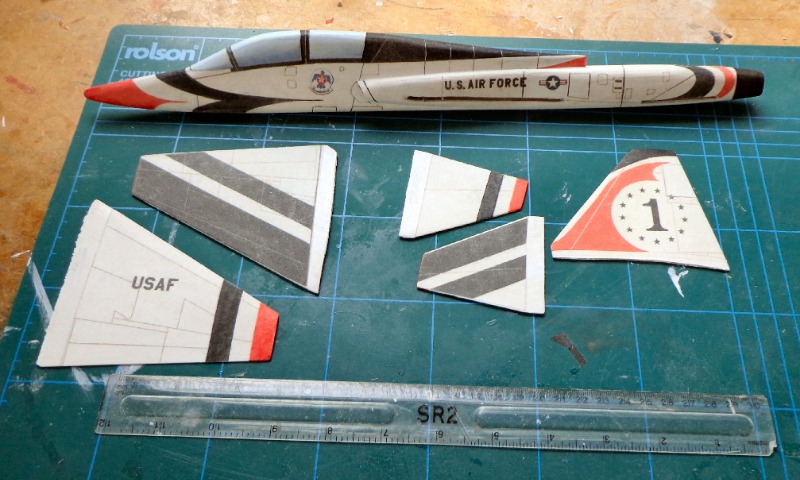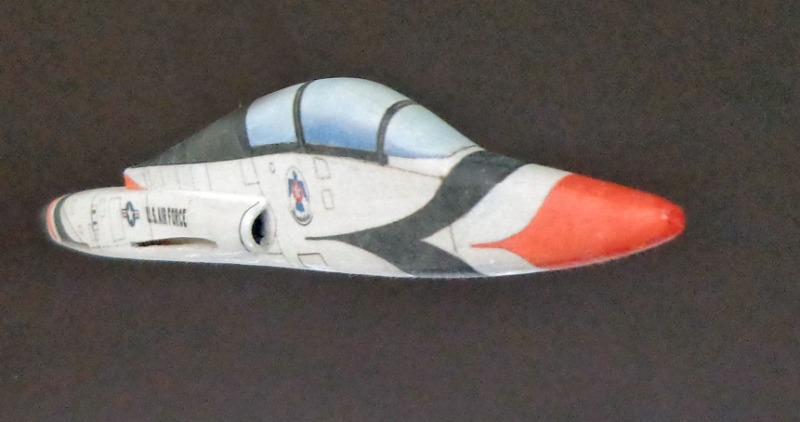Hi Guys,
Preamable:
I love printed tissue on balsa as it means I can create a model's livery, or decoration, on the computer (the 'undo' function is very useful; I wish there was one in real life) and your model need not be painted - with all the masking, airbrushing, cleaning, applying decals etc. that this involves - and it's very light too.
One problem, though, is that the balsa wood grain shows through, and different balsa wood can vary in shades of cream to light brown. So the finish is not homogenous and if the prototype was originally white some cognitive dissonance is required when admiring the model. OK - us modellers are used to this (think troughs and exposed motors on our models) - but I've been wondering if one can't do better. Covering with 60 gsm paper gives a finish with more depth (though the grain can still show through a tad) but the technique required to cover a curved structure with paper is not one for the faint hearted.
Some modellers recommend a dusting of chalk dust on the unprinted side of the tissue: this works well for them on open structures, but I am m not sure if it would look as good on an all-sheet model.
So my plan is:
1. Apply one coat of Deluxe 'Sand 'n Seal' to test sheets of sheet balsa. Rub down.
2. Apply two - three coats of diluted ( consistency like single cream) acrylic white paint, rubbing down between coats
3. Print test templates - Iskra tailplane, for example. Epson own brand is reasonably waterproof, (red can bleed most noticeably). I will spray two; one template will receive a light dusting of with 'Ghia Satin' inkjet fixative before the next step.
4. Apply tissue with diluted 'Ezee Dope''. Smooth down (does the colour run?) allow to dry. Rub down. Apply finishing coat of Ezee Dope.
5. Now, as they say, 'compare and contrast'. Is the white, white? Does the grain show through? Has the red a better depth of colour? Is it worth all the effort? Will anyone notice on the flying field?
 Results
Results
I applied one coat of 'Sand 'n Seal and three of white acrylic to sheet balsa. One sheet was noticeably darker and 'grainier' than the other.
The tissue, printed with templates of the Iskra tailplane went on fine with dilute Ezee Dope. 'Fixing' the ink appears unnecessary as there was no bleed of the ink that I could see. Another coating of Ezee Dope completed the experiment.
The result you see below:
The tailplane on the right is of my completed Iskra, which was covered with tissue over doped balsa. As you can see, (a) the new procedure appears to work; (b) the balsa grain is invisible and 'white is white'; (c) the colours are nicely vibrant; (d) I quite like Ezee Dope, and, being water based, the tissue shrinks quite nicely but not too much.

So now I have no excuse to not make another model!

One thought: white DIY emulsion might be equally effective when applied to the bare balsa. And cheaper.






